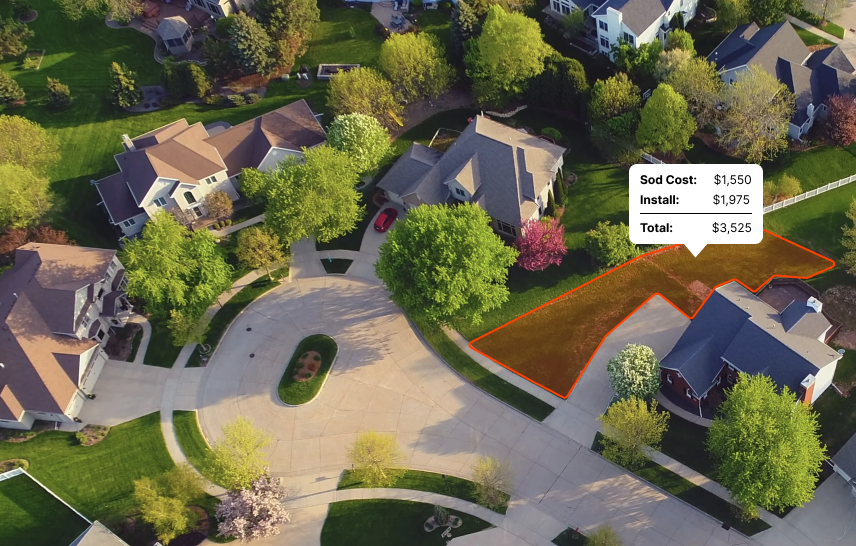Ready to lay your Missouri lawn? The sweet spot is spring or fall, when temperatures are Goldilocks-perfect, and rain is regular enough to give your grass a good start. This sets up your grass to stand strong, come summer heatwaves or winter frosts.”
Introduction
Alright, let's talk Missouri. Up north, it's a humid continental climate—think hot summers, cold winters, and rain that doesn't play favorites with the seasons. Down south, it's a subtropical party, keeping the temperature dial consistently high.
In Missouri, your lawn's fate hinges on the grass zone it calls home. The Show-Me State is a bit of a patchwork, divided into cool-season, transition, and warm-season zones. Up in the north, where winter bites and summers stay mild, tall fescue and Kentucky bluegrass rule the roost.
These cool-season champs lap up the climate here. Take a trip to the middle of the state, where summers sizzle and winters chill, and you'll find a mixed bag. The transition zone plays host to both warm and cool-season grasses.
Think fine fescue rubbing shoulders with zoysia grass. Down in the south, it's warm-season territory. Hot summers and mild winters are music to the ears of Bermuda grass and centipede grass.
What are the best sod types for MO?
In the world of landscaping, not all grasses are created equal. Each thrives in a specific climate zone: cool, warm, or transition.
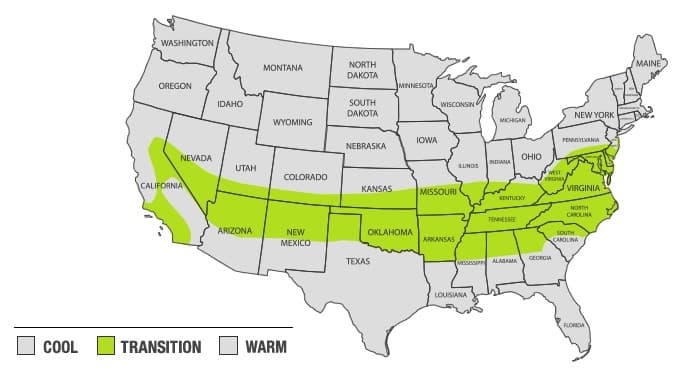
Missouri, with its transition zone climate, prefers a particular set of grasses that relish the a wide range of temperatures. The following sods are the easiest to grow and maintain in Missouri:
While it's possible to grow grasses meant for other regions with proper care, attention and timing, these are the most common grasses in Missouri for residential lawns.
Level Up Your Lawn Skills
Once per week we'll send you an interview from someone who has mastered the art of lawn care.
Recommended species for shade
When it comes to choosing the best sod for shaded areas in Missouri, we need to pay attention to the fussy details like sunlight hours and climate conditions. Don't freak out, we've got you covered!
First up, we've got Fine Fescue, an MVP of shade tolerance. This tough guy can endure only four hours of sunlight per day. Its secret weapon? Fine leaf blades. They capture minimal light, thriving in shade like a mossy forest floor. It doesn't need much care so you can kick back and relax.
Next, St. Augustine grass. It's literally "cool" as it thrives in cooler locations. It can handle about six hours of sunlight a day. Its rich, dark green color gives a beautiful, thick carpet-like look. Not a big fan of cold weather, but a little shade? Absolutely.
If you've got a mix of sun and shade, we highly recommend Zoysia. It's like the rockstar of sods, taking on both sun and shade with equal enthusiasm. It requires at least five to six hours of sunlight per day. However, be sure to keep it well hydrated, Zoysia loves a good drink!
And, if you're dealing with heavy shade, go for the Rough Bluegrass. With its light green color and soft texture, it can bring a lush carpet feel to your lawn. Four hours of sunlight is all it asks for.
But let's be real, Missouri weather has mood swings. Luckily, the Kentucky Bluegrass can handle them. It's not the most shade-tolerant in the roster but with six to eight hours of sun, it's a champ.
We believe in mixing things up, so feel free to seed your lawn with a variety of these grasses. Create a blend that best suits your landscape's personality. Remember, lawns are like people, they've got their quirks and preferences. Listen to them, cater to their needs, and they'll reward you with lush, green beauty that boosts curb appeal and makes neighbors green (pun absolutely intended) with envy.
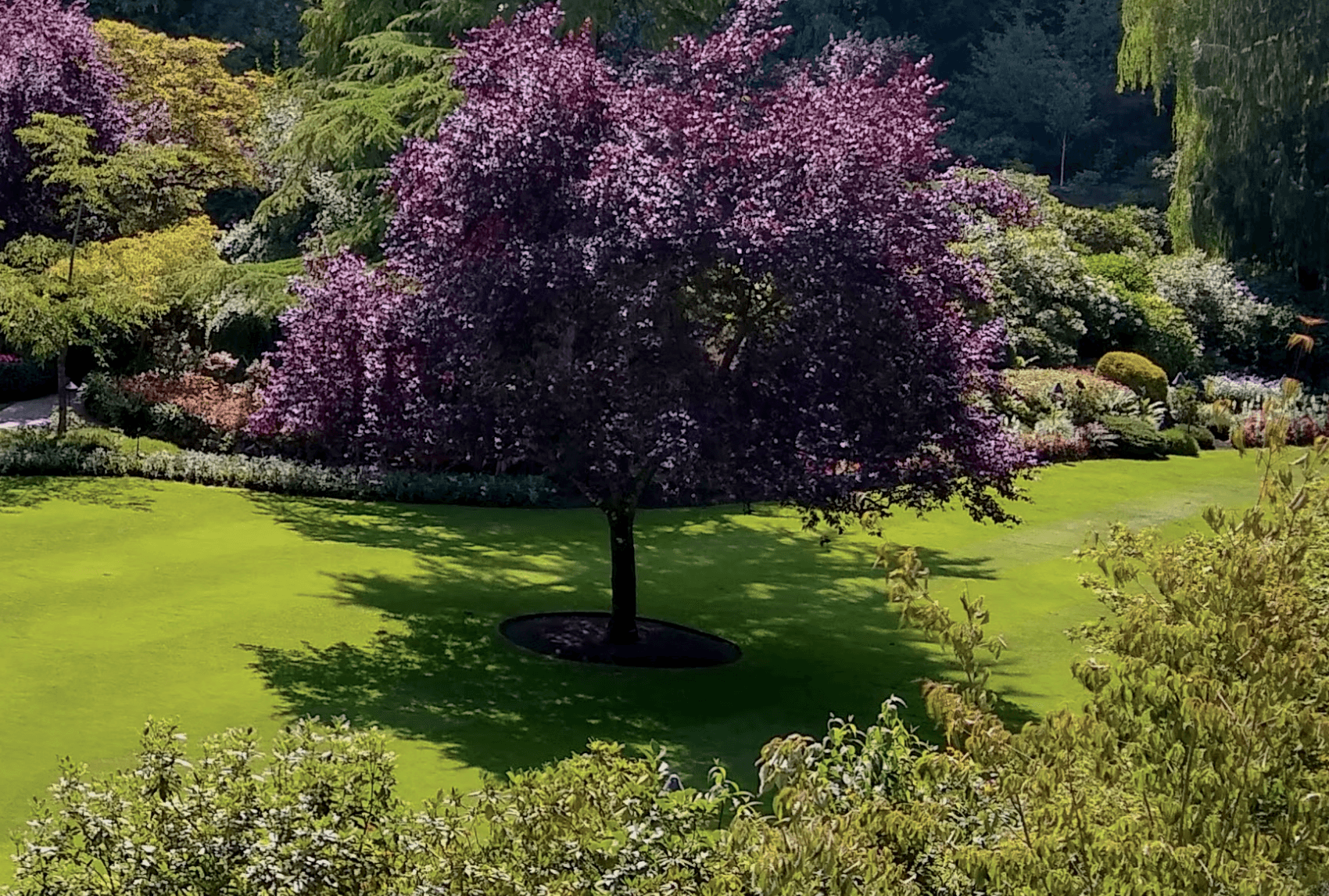
Recommended for full sun or partial sun
Choosing the right sod for your lawn depends heavily on the sunlight exposure in your yard. Different grass types have varying light requirements for optimal growth and appearance. Assessing whether your lawn receives full or partial sun is essential in selecting sod that will flourish and stay healthy in your specific environment.
Below are some sod options recommended for either full sun or partial sun conditions in MO:
| Grass Type | Sun | Good to Know |
|---|---|---|
| Zoysia | Full | Zoysia grass prefers full sun but can tolerate some shade. It is known for its dense turf and resistance to pests and diseases. |
| Tall Fescue | Partial | Tall Fescue is adaptable to a range of conditions, including partial sun, and is known for its deep root system and tolerance to drought. |
| Kentucky Bluegrass | Full | Kentucky Bluegrass prefers full sun and is prized for its fine texture, rich color, and ability to recover quickly from damage. |
| Perennial Ryegrass | Full | Perennial Ryegrass thrives in full sun and is known for its rapid germination, fine texture, and bright green color. |
| Fine Fescue | Partial | Fine Fescue is well-suited for partial sun and is appreciated for its fine texture, shade tolerance, and low maintenance requirements. |
What varieties stay green year-round?
As with anything agriculture related, there is some nuance to this question. There are many grasses that can stay green year round in but it depends heavily on your location within Missouri as well as any microclimates that may exist.
The following grasses have the ability to stay green year round in Missouri:
| Grass Type | Caveats |
|---|---|
| Zoysia | It can stay green nearly year-round in milder climates without severe winter freezes or overly high summer temperatures. |
| Tall Fescue | It typically stays green throughout the year in milder climates, given that it isn't overly stressed by heat or drought in the summer. |
| Kentucky Bluegrass | It can retain its green color for much of the year when well-maintained, though harsh winter temperatures can push it towards dormancy and a browner hue. |
| Perennial Ryegrass | It can stay vibrant and green throughout the year in many climates, unless conditions are extremely cold or dry. |
| Fine Fescue | It keeps its green color throughout the year in ideal conditions. If the winters are particularly harsh, it may lose some color. |
What is the best time to lay sod in Missouri?
For transition zones, consider the type of sod. For warm season grasses, aim for late spring. This gives them a full summer to establish before winter. For cool season grasses, fall is best, allowing roots to develop in mild temperatures. Whichever you pick, avoid extremes of summer and winter. So, late spring for warm grasses, fall for cool ones, and skip the severe seasons.
As you can see in the image below, you'll notice the most shoot growth (the grass above ground) and root growth in the spring and fall for cool season grases and during the summer for warm season grasses:
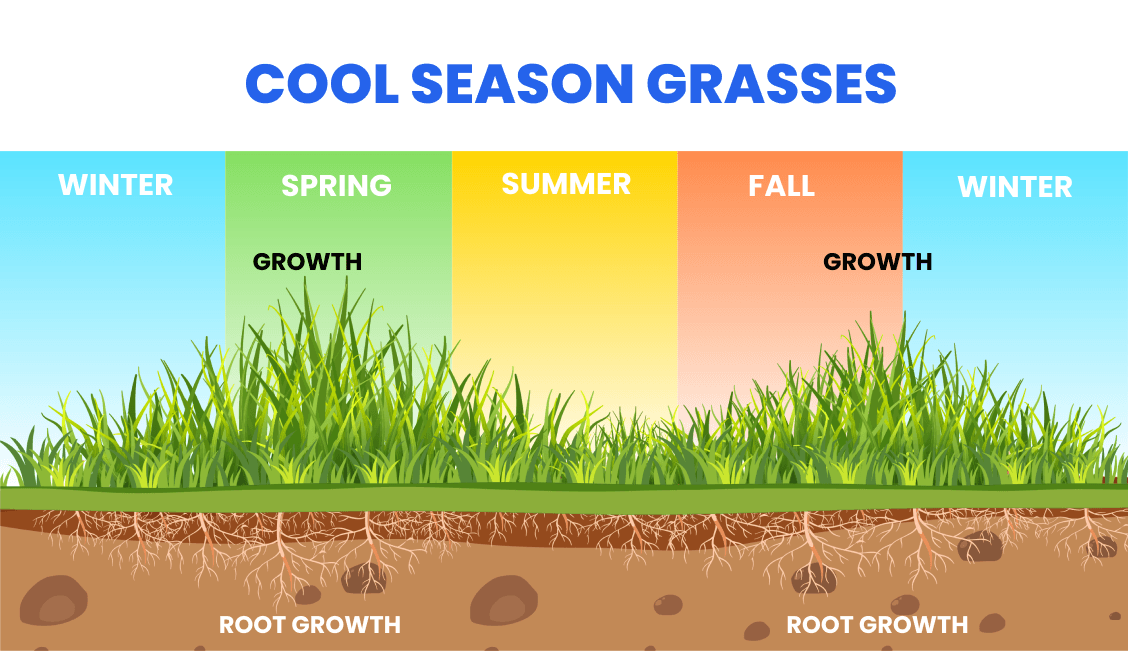
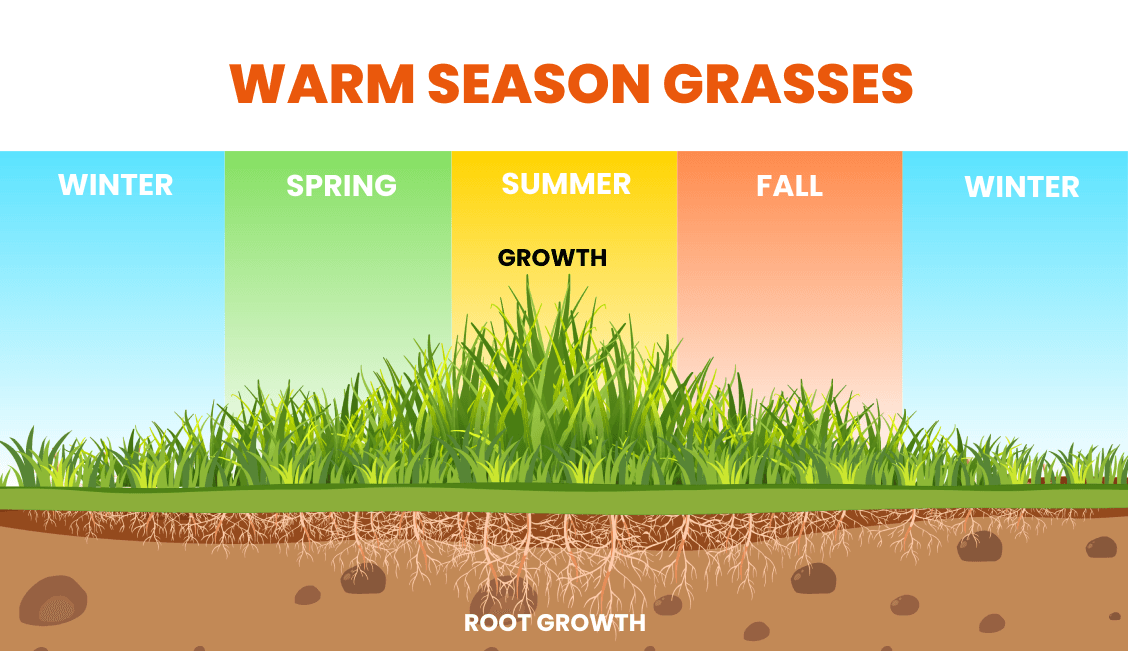
Find reputable companies for installing sod in MO
Here are the top problems you'll face when trying to get sod installed by a landscaping company:
- They're not transparent about pricing. You'll often get a quote that's way higher than you'd expect.
- They're hard to get ahold of on the phone or you'll reach out online but won't hear back.
- It's hard to pin them down for a specific date. Because you can only bring sod from the farm when there's decent weather, this causes some delays at times. It also has a short shelf life, so it's important to get it installed within a day or two of delivery.
We've done all the work for you. Click below to get a quote from one of the top installers in Missouri.

